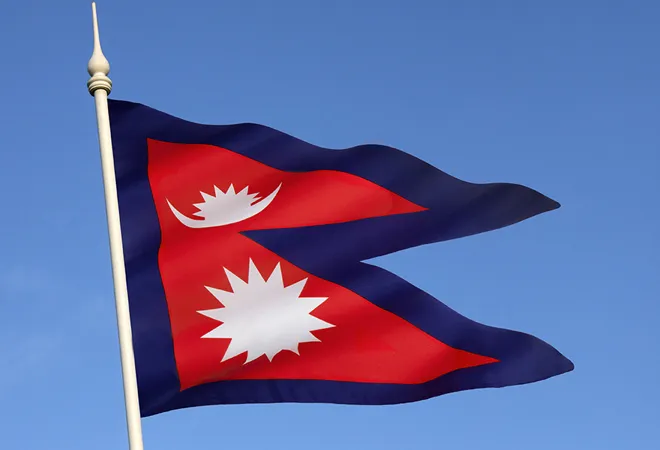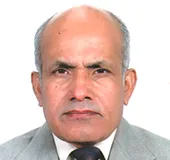-
CENTRES
Progammes & Centres
Location
India has played a vital role in Nepal’s quest to develop its power sector. The national forces of Nepal should take necessary steps to ensure that these ties continue unabated

No two countries are as closely tied as Nepal and India in geographical, socio-cultural, religious, economic, and diverse other fields. Because of such ties, India’s support to Nepal in its quest for development has remained exemplary. This was seen even during the recent visit by Nepalese Prime Minister Pushpa Kamal Dahal to India between 31 May and 3 June. A wide range of agreements have been signed between Nepal and India. The two countries renewed the historical Nepal-India transit treaty, apart from signing an agreement for the use of waterways for the transportation of goods. Besides, India allowed Nepal to export its surplus power to India to the tune of 10,000 MW in the next 10 years. India also went out of the way to support Nepal by allowing it to export power up to 50 MW to Bangladesh in the first phase through its transmission lines. By doing so, Nepal secured its market for power supply outside India for the first time.
India also went out of the way to support Nepal by allowing it to export power up to 50 MW to Bangladesh in the first phase through its transmission lines.
Equally, important was the agreement between Nepal and India for constructing two oil pipelines—one between Siliguri (India) and Kakarbhitta (Nepal) and the other between Amlekhgunj-Chitwan in the central development region of Nepal. Also, a memorandum of understanding was signed to facilitate a cross-border digital payment system to further integrate the economies of the two countries.
India’s commitment to buy 10,000 MW of power from Nepal in the next 10 years is a breakthrough in power trade between the two countries. It has not only guaranteed the market for Nepal’s excess power to India on a long-term basis, but it has also generated huge prospects for the growth of both domestic and foreign investment in the power sector in Nepal.
Prospects for investment by the Indian private sector in Nepal’s hydropower sector have grown more. This is so because India has made it amply clear that it would not buy power from such power projects in Nepal that are directly or indirectly owned, funded, or benefited by the citizen of a third country which has a land border with India but no bilateral agreement in the power sector with it. India would not even buy power under a 10,000-MW power deal with Nepal in case there is any involvement of Chinese or Pakistani companies in such a power project. On this ground, India has recently refused to accept Nepal’s offer to supply electricity from 456 MW Upper Tamakoshi as the Chinese contractors were involved in this project.
India’s commitment to buy 10,000 MW of power from Nepal in the next 10 years is a breakthrough in power trade between the two countries.
Now, to meet the commitment with India to supply 10,000 MW of hydropower, Nepal needs to produce a minimum of 15,000 MW of power in the next 10 years as there would be further consumption of power in the domestic market and the country would have to export its additional surplus power to Bangladesh in the years to come.
In its efforts to supply power to India, Nepal is working hard to strengthen its domestic transmission infrastructure network and build cross-border power lines. For this, Nepal and India have been working together to complete the high-capacity cross-border power line like the Dhalkebar-Sitamarhi cross-border power line that has a carrying capacity of 2,000 MW power. Construction work on Butwal (Nepal)-Gorakhpur (India) cross-border transmission line is likely to begin. Nepal and India have also agreed to develop the 400kV Inaruwa (Nepal)-Purnia (India) power transmission line, apart from the 400kV New Lamki (Nepal)-Bareli (India) power transmission line. If these cross-border lines are completed by 2028-29, Nepal would be in a position to transmit about 9,000 MW of power to India.
It is not long before Nepal experienced a boom in the power sector. Even though the country has the potential to produce 42,000 MW of hydropower, no adequate thrust was given for its development in the past. So, Nepal used to have power cuts for up to 18 hours daily in 2008-9. But by coming of May 2018, Nepal Electricity Authority announced the end of load shedding when the country began to produce 1,000 MW of power. By 2021, the country started producing surplus power, especially in the wet season. By now, the country produces around 2,700 MW of power, which is likely to grow to 2,853 MW by the end of the current fiscal year 2022-23.
Nepal and India have also agreed to develop the 400kV Inaruwa (Nepal)-Purnia (India) power transmission line, apart from the 400kV New Lamki (Nepal)-Bareli (India) power transmission line.
Under the existing power deal between Nepal and India, Nepal’s dependence on India is likely to grow in the same proportion as India’s dependence on Nepal. This growing economic interdependence between the two countries is mutually advantageous to the two countries. It is encouraging that India has been given almost a free hand in recent years to work in the hydropower sector in Nepal. If that were the spirit in the past, Nepal would already have emerged as an economically affluent country in Asia. Nepal’s realisation that it cannot develop its hydropower adequately without India’s support and its eagerness to work with India on this front irrespective of political instability in the country is a great achievement.
Now the prospects for Nepal to emerge as a strong economic power in South Asia have grown enormously as the revenue that would be generated through the sale of surplus power to India, apart from Bangladesh, has a larger potential to increase per capita income and GDP in the country. This could also help in bridging the bourgeoning trade deficit with India and other countries. Besides, the growing power production within the country would have a multiplier effect on the development of different sectors of the economy, including the agricultural, industrial, transportation, and other sectors. However, there is also a potential threat from certain elements that can hamper this environment of growing trust between Nepal and India for the development of hydropower in Nepal. Therefore, it is the primary responsibility of all the nationalist forces in Nepal to work together to see that Nepal-India cooperation in the power sector continues unabated.
Hari Bansh Jha is a Visiting Fellow at the Observer Research Foundation.
The views expressed above belong to the author(s). ORF research and analyses now available on Telegram! Click here to access our curated content — blogs, longforms and interviews.

Hari Bansh Jha was a Visiting Fellow at ORF. Formerly a professor of economics at Nepal's Tribhuvan University, Hari Bansh’s areas of interest include, Nepal-China-India strategic ...
Read More +